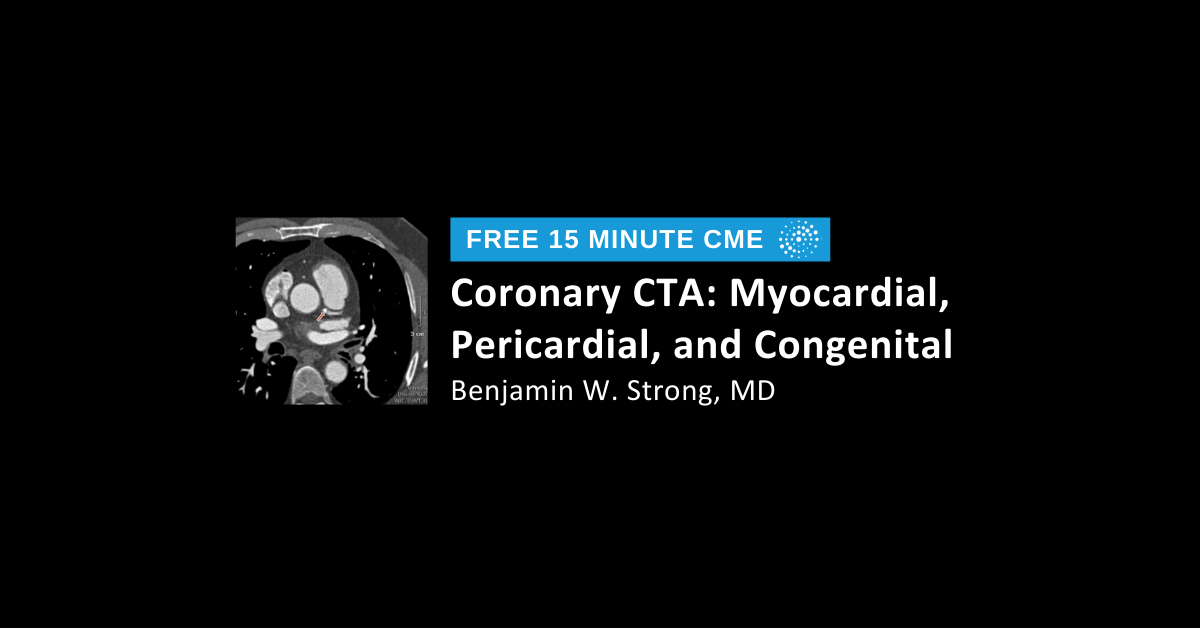Coronary CTA: Myocardial, Pericardial, and Congenital
0.25 AMA PRA Category 1 Credit™
Cost: Free
Expires: 12/31/2025
Course Overview
15-minute radiology education through the presentation of radiographs and CT scans of established pathologies, with annotated video color-coded and synchronized with lists of findings and unifying diagnoses.
Learning Objectives
- Learn the typical myocardial, pericardial, and congenital pathologies that can be diagnosed by coronary CTA.
- Recognize the CTA findings of specific myocardial, pericardial, and congenital abnormalities.
- Understand the role of CTA in the diagnosis of myocardial, pericardial, and congenital pathologies.










.jpg?width=1024&height=576&name=vRad-High-Quality-Patient-Care-1024x576%20(1).jpg)







%20(2).jpg?width=1008&height=755&name=Copy%20of%20Mega%20Nav%20Images%202025%20(1008%20x%20755%20px)%20(2).jpg)




